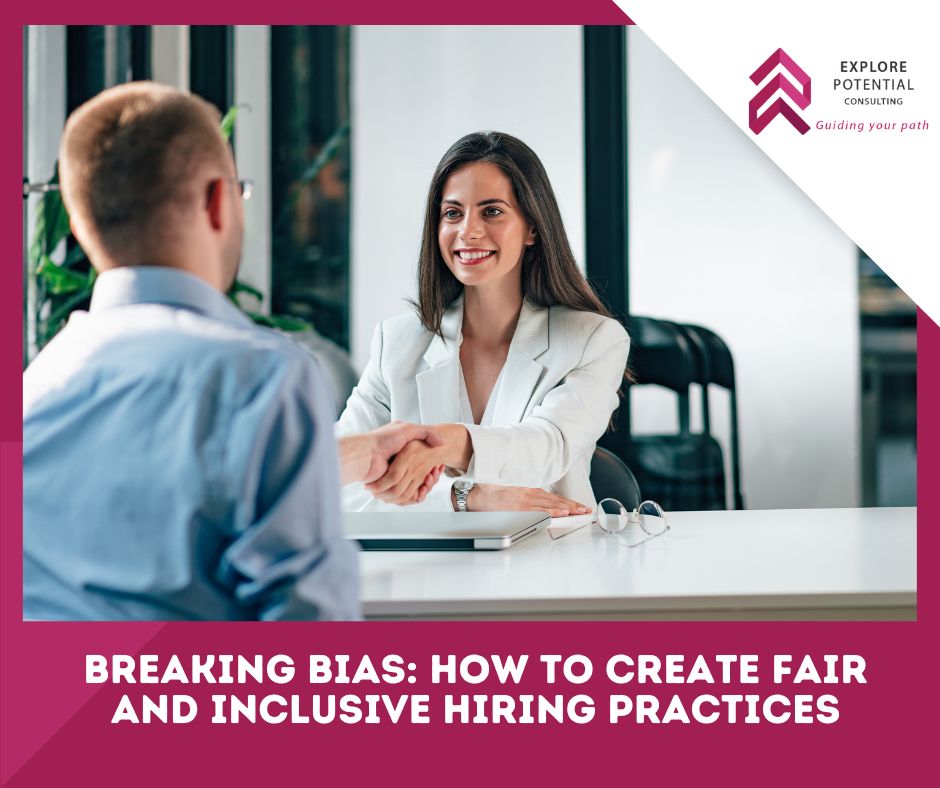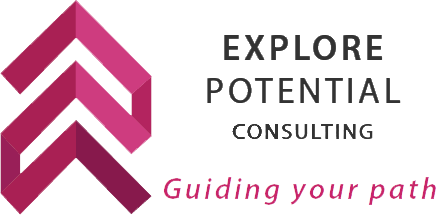Breaking Bias: How to Create Fair and Inclusive Hiring Practices

By Nicole Swaine
Recruitment is one of the most critical aspects of building a high-performing and diverse workplace. However, unconscious bias—automatic judgments influenced by personal experiences, cultural norms, and stereotypes—can impact hiring decisions without us even realising it. These biases can limit opportunities for talented individuals and prevent businesses from accessing the best talent.
At Explore Potential Consulting, we believe in fostering fair, inclusive, and high-quality hiring practices. This article explores the impact of unconscious bias in recruitment and outlines practical strategies to ensure equity and objectivity in hiring decisions.
Understanding Unconscious Bias in Recruitment
Bias in hiring takes many forms. While often unintentional, it can significantly impact candidate selection and workplace diversity.
Types of Bias and Their Impact
Stereotypes and Preconceived Notions
Stereotypes, often shaped by media and societal influences, can unconsciously affect hiring decisions. For example, studies show that candidates with ethnic-sounding names may face additional barriers when applying for leadership roles.
Affinity Bias
This occurs when hiring managers subconsciously favour candidates who share similar backgrounds, interests, or experiences—often leading to a lack of diversity in teams.
Micro Biases
Subtle signals, such as tone, body language, or phrasing, can unintentionally marginalise candidates during interviews or evaluations.
Cognitive Biases
These biases influence how information is processed and assessed:
- Halo/Horns Effect – One positive or negative trait overshadows the entire evaluation.
- Primacy/Recency Bias – First or last impressions carry more weight than overall performance.
- Leniency/Strictness Bias – Candidates are rated too generously or too harshly.
- Expediency Bias – Decisions are made based on the most accessible rather than the most relevant information.
The Risks of Unconscious Bias in Hiring
For Candidates:
- Missed opportunities due to unfair assessments.
- Increased hesitation or lack of confidence in applying for roles.
- Feelings of exclusion from the hiring process.
For Employers:
- Limited talent pool, leading to missed high-potential hires.
- Poor hiring decisions due to biased evaluations.
- Workplace disengagement and high turnover.
- Legal and reputational risks related to discriminatory hiring practices.
The good news? Unconscious bias can be managed with intentional strategies.
How to Reduce Bias in Recruitment
- Implement Structured and Objective Hiring Processes
- Standardised Interviews: Use the same set of pre-defined questions for all candidates to ensure fairness.
- Clear Selection Criteria: Define job-relevant skills and competencies upfront.
- Objective Assessments: Use work samples, skills tests, or behavioural interviews to evaluate candidates based on merit.
- Bias Audits: Regularly review job descriptions for gendered language or exclusionary phrasing.
2. Expand and Diversify Talent Pools
- Inclusive Job Ads: Highlight flexibility, development opportunities, and a commitment to diversity, equity, and inclusion (DEI).
- Targeted Outreach: Partner with diversity recruitment platforms and professional networks that support underrepresented groups.
- Diverse Hiring Panels: Involve interviewers from different backgrounds to balance perspectives in decision-making.
3. Train Hiring Teams on Bias Awareness
- Bias Awareness Training: Equip hiring managers with tools to recognise and challenge biases in decision-making.
- Checklists & Prompts: Encourage assessors to question their own judgments (e.g., “Is my assessment based on evidence or assumptions?”).
- Feedback Loops: Ask multiple assessors for input to reduce individual bias impact.
4. Foster Inclusive Interview Practices
- Transparency: Clearly communicate interview structures, expectations, and next steps to candidates.
- Role-Relevant Questions:skills and competencies
- Accommodations:flexible interview formats
- Micro-Affirmations:inclusive language and respectful interactions
5. Track Progress and Hold Teams Accountable
- Data-Driven Decisions: Analyse hiring data to identify trends in hiring biases or disparities.
- Diversity Metrics: Set clear inclusion goals and integrate them into hiring managers’ performance evaluations.
- Policy Refinement: Regularly update hiring policies based on feedback and new industry standards.
6. Strengthen Employer Branding & Inclusion Initiatives
- Showcase Workplace Diversity: Share employee success stories from diverse backgrounds.
- Engage with Candidates: Provide clear communication and supportive feedback throughout the hiring process.
- Build Community Partnerships: Collaborate with organisations that support underrepresented groups to increase workplace inclusivity.
Moving Forward: Building a Fairer, More Inclusive Hiring Process
Addressing unconscious bias in hiring isn’t about ticking boxes—it’s about creating real, lasting change that benefits both employees and businesses. When organisations commit to fair hiring practices, they build stronger teams, drive innovation, and create workplaces where everyone can thrive.
At Explore Potential Consulting, we help businesses develop inclusive hiring strategies that attract diverse talent, reduce bias, and improve decision-making. Want to learn more? Get in touch with us today!
Contact us at
email : info@explorepotential.com.au
Contact : 0436 032 639
Let’s build a future of fair hiring—one decision at a time.
